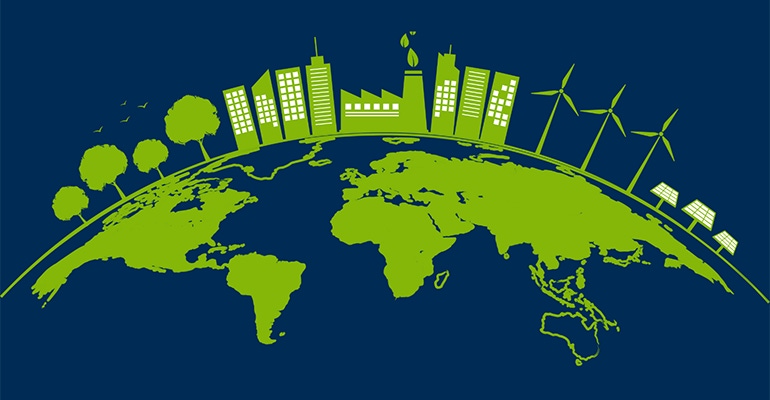Conserve Energy, Conserve Cash
Go green while saving green with the right modern tools.
April 9, 2024

Sponsored Content
When we think about sustainability it’s hard not to think about money, too. More sustainable options are sprouting throughout our day-to-day lives: electric stoves, recycled paper towels, concentrated dish soap. For now, though, many of these options ring in at higher prices.
Because of how they sometimes look in supermarkets, are green alternatives in the concrete industry also predetermined as expensive? From a business perspective, unless there’s an immediate ROI involved, it’s likely hard to part with something that worked well last year. Green or not, solutions that provide steady growth are usually top of mind.
But what if more sustainable solutions helped pay for themselves? What if, instead of having to wait to see a sustainable investment pay off, it raked in cost savings that were evident in just a few weeks' time? WATCH VIDEO.
Trimming idle time and tedious tasks out of our days with smart technology has sparked an efficiency revolution — empowering performance-driven business strategies from better batching to quicker deliveries.
But now, with the right modern tools, the industry no longer has to decide between productive or sustainable operations.
Where sustainable chain reactions start
For ready mix producers, staying on top of inventory is key. With a “keep the bins full” mentality, they position themselves to never run out of the materials that go into the products their customers need. But without real-time insights to confirm whether there’s enough to get through the day, over-ordering materials stands as a financial risk. Where is this extra material stored? Likely in trucks that must now wait in the yard before they can get back to normal operations.
Accurate inventory awareness is especially powerful in a time of inflated fuel and transportation costs, which of course are uncontrollable. But don’t forget: this best practice is sustainable, too. As cement production is responsible for a good chunk of global CO2 emissions, ordering materials in more precise amounts prevents any unnecessary consumption.
Cost-savings within actual production are also provided by sustainable practices. When it comes to batching concrete, accurately measuring raw material proportions minimizes waste. And with checks from quality control systems, producers can quickly identify poor qualities before products reach the job site. With the right mix, loads avoid rejection. And using only the resources you need avoids waste.
Green savings on-the-go
Eliminating paper from the equation without a doubt leaves less of an environmental impact. Does it save money, though? Aside from not paying for ink, printers, or paper itself, we can answer this question by looking at why paper tickets exist in the first place.
As delivery tickets contain critical information like mix, batch, and cumulative volume data, admixtures, and water make-up (among other pieces), they help ensure the right product gets to the right customer at the right time. But if you’ve ever played rock, paper, scissors, you’ll know paper isn’t invincible. Or always legible. Unfortunately, it’s easy to lose paper. Which means it’s also possible to lose or misinterpret a ticket’s critical data. Cutting the need for paper with tools like a cloud dispatch system and securing this data digitally prevents loss, speeds up deliveries, and saves cash.
Pairing real-time dispatch with smart telematics ramps up savings when 1) you know exactly where trucks are to make sure they’re not using any more fuel than they need to, and 2) extending the shelf life of a fleet by reducing unnecessary mileage and the need for repairs.
Lastly, let us reintroduce a tool that truly embodies the green mantra we’ve all heard before: reduce, reuse, recycle.
Knowing a truck’s exact contents doesn’t come with trusting your gut. (Sorry guts!) But with Load Assurance, ready mix businesses ensure leftover concrete after a pour doesn’t go to waste. Instead of dumping out excess, this tool allows a team to keep any remains, and transfer them to jobs with the same product specifications. Sensor data — including slump, temperature, volume, water additions, W/C ratio, drum rotation, and direction for each load — goes into the cloud and is readily available in real time to all who need it.
The ability to trace concrete properties can reduce cement usage per yard through tighter water control, and therefore, reduce standard deviation of compressive strength. Doing so can also reduce energy costs by knowing the exact adjustment required to reach a desired placement temperature. Accurate returning volume, extra water, and temperature data helps to enable the reuse of returned materials. Meanwhile, dispatchers see this data as they arrange a truck’s next delivery ticket and can plan a route to fully use a material — eliminating any waste.
You May Also Like


